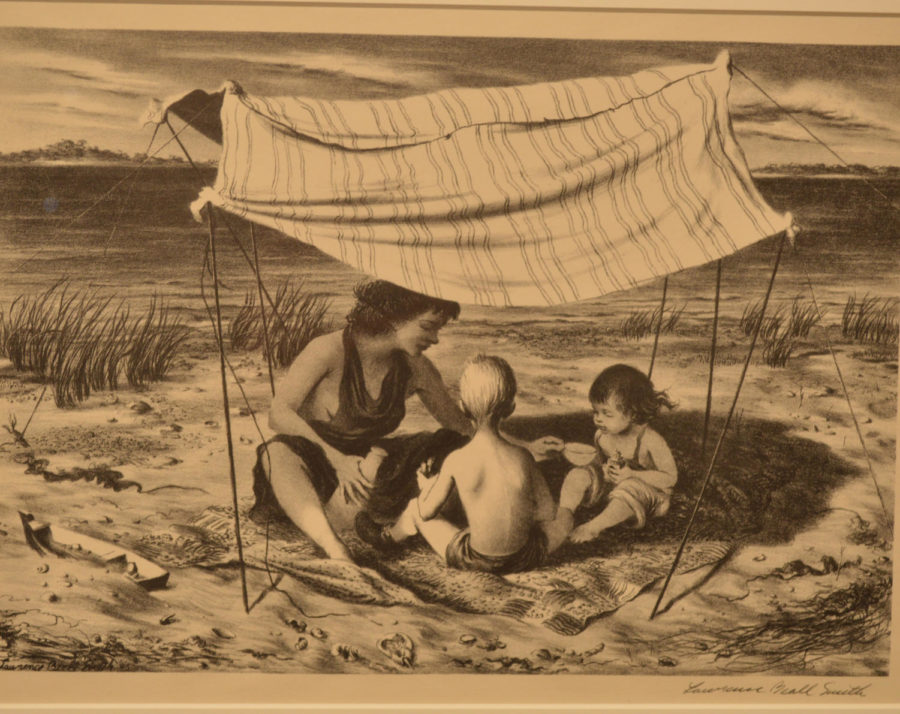New Art Exhibit Opens at the Pauly Friedman Art Gallery
Prints from the early to mid 1900s featuring many artists from that time period are currently on display in the Pauly Friedman Art Gallery on campus.
Dr. Lalaine Little, gallery director, said almost all the prints were created around the time of the Great Depression.
“Reeves Lewenthal, the art dealer who organized the American Artists Association, was doing what he could to keep the art industry and artists afloat during the Depression,” said Little, explaining that Lewenthal reached out to America’s middle class.
The American Artist Association published advertisements in newspapers and magazines around the country to promote these prints. People from all classes could find beauty in them while the their affordability allowed artwork to gain popularity with the middle class. According Little, the Great Depression was where artwork started to become commonplace in many houses across America.
Not only did these prints make art mainstream, they also supported many artists during the Depression when millions of people were out of work and trying to make money any way they could. The American Artist Association helped these artists survive.
The works of female artists of the time are depicted on a wall in the gallery in an effort to highlight these women who had to overcome a male-dominated society. Even though women were a vital part of the workforce, they were not given the same opportunities as men but were able to prove themselves as artists in society.
“Achieving the level of renown to land a place in galleries or museums was still heavily weighted toward men,” Little explained.. To highlight this lack of representation, I gave the women artists their own wall.”
The prints presented in the gallery share a similar theme of realism.
“Realism was appealing for its straightforwardness and perceived honesty, as long as it didn’t go too far and depict something unpleasantly real,” Little said.
Little says that there was a specific target audience for these prints as they related to the middle class which largely believed hard work and labor are the fundamentals of this country and, with those fundamentals, the country can be revitalized. At the time, cities were experiencing large population growth and attracted people from around the country looking for work.
Many of these prints have been designed around a farming scene or natural beauty. One of the prints is called “The Swimming Hole” which shows a group of young people jumping and playing in a stream in the countryside.
Prints based around simple living are not the only theme on display as many artists during this time wanted to appeal to all workers.
“Depictions of the street scenes, on the other hand, were intended to recognize the urban workers,” said Little.
“It’s not really my goal to interpret works of art – I think people put a lot of pressure on themselves to try to find meaning in art through interpretation or psychoanalysis or whatever,” added Little. “I hope that audiences will think about how original works of art can positively transform how we experience the world with all its quirkiness and adversity.”
Students are encouraged to visit the gallery and experience the prints for themselves.
“Students should come away with a sense of the themes that were thought to appeal to consumers in the early part of the 20th century,” Little said.
The exhibit will close Jan. 9.

